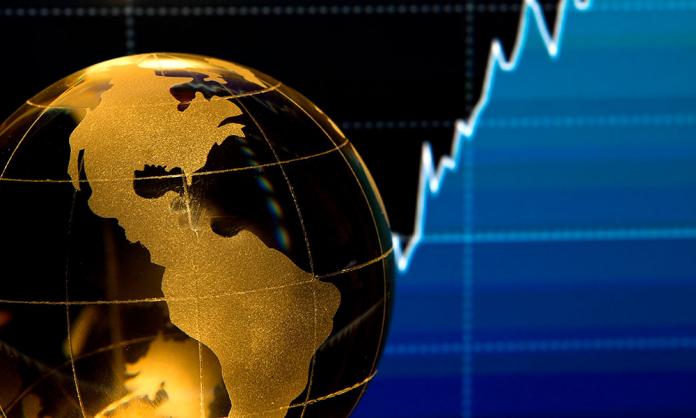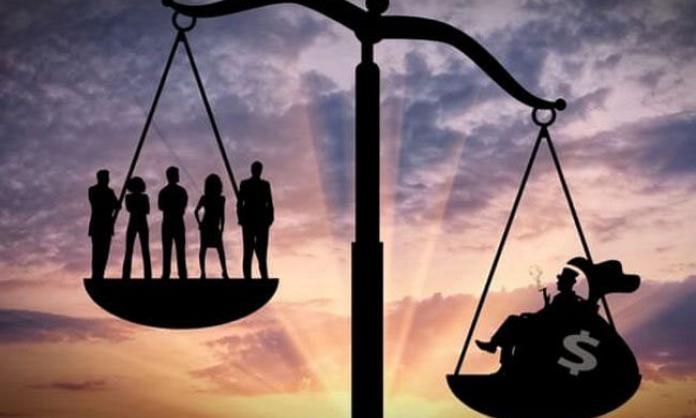How is the world economy doing as 2023 comes to an end? To answer that, we must remember that the “world” is made up of many parts, and not every major economy is doing as well as others.
Let’s first take the United States: the largest (by national output) and most important (in technology and finance). At the beginning of 2023, the consensus among mainstream economists was that the US and the rest of the advanced capitalist world could well slip into a recession, a significant rise in unemployment and further declines in average real incomes as the inflationary spiral that began in 2021 continued to eat into working people’s wages.
This is what I said at the beginning of the year in my blog: “Never has an impending recession been so widely expected. Maybe that means it won’t happen—given the record of mainstream economic forecasters. But this time the consensus looks set to be right. Sure, there are some forecasters in the US who continue to claim that the US economy with its tight labour market, slowing inflation and strong dollar will avoid a slump”.
Well, those forecasters have been proven right and the US economy, so far, has not entered a “technical recession” (rigidly defined as when an economy contracts in national output for two consecutive quarters). Now the consensus has swung back to optimism: there was no recession in 2023 and things can only get better in 2024.
Take the super-optimist view of Goldman Sachs, the leading US investment bank and major strategist for US capital. Its economists report: “The global economy has outperformed even our optimistic expectations in 2023. GDP growth is on track to beat consensus forecasts from a year ago” and “we continue to see only limited recession risk”. The bank’s team reckon that global output will grow 2.7 percent this year and 2.4 percent next year, with unemployment rates staying low and inflation falling fast. So, the US Federal Reserve’s policy of hiking interest rates has brought inflation down without incurring a slump in production and employment—at least in the US.
This is called a “Goldilocks” outcome: the economy is not too “hot” that inflation stays high and not too “cold” that there is a contraction in output and rising unemployment. And this is happening despite the Ukraine-Russia war and now the Israel-Gaza nightmare. Perfect!
But hold your horses. It’s true that inflation rates in most advanced capitalist economies have fallen in the last year from a peak of about 8-10 percent a year to 3-5 percent. That is some comfort for hard-pressed households, but it still means that prices in the shops, for transport, housing and utilities are rising. Indeed, since the start of the inflationary spiral, the cost of living for the average household has risen by 15-20 percent in most economies, and even more for the poorer households that spend a greater proportion of their incomes on food and energy. Prices are not going back to where they were before the pandemic slump of 2020; they are just rising more slowly.
As for unemployment, it’s true that official figures in most countries show unemployment rates at or near historic lows. Why is that? It’s not so much due to a strong labour market. It’s more that, since the pandemic, the available labour supply has stopped rising. Many workers near retirement have not returned to work, and a significant number are still suffering from long COVID (there has been a sharp rise in disability benefit claimants).
But there are signs that low unemployment rates in the US and elsewhere may not last. In many major economies, a lot of jobs created in the last year have been part time. Indeed, in the US, there has been a decline in full-time jobs since April. And job creation growth is fading fast each month. Moreover, hours worked in US industry have been dropping back. Even if wage rates rise to surpass falling inflation rates, if workers work fewer hours, then weekly earnings will rise much less or not at all. In the US, real weekly earnings did not rise in 2023. And when we look at the most productive sectors of the major economies, things are not so rosy. For instance, the US manufacturing sector is in recession already.
The US has been the best-performing advanced capitalist economy this year, with real national output rising by about 2 percent. Elsewhere, the rest of the G7 economies are either already in recession (Germany and Canada) or close to it (Italy, France, the UK and Japan). And several smaller European economies are contracting (Sweden, Netherlands and Austria, with eastern Europe also heading down).
Even that “lucky country”, Australia, is not looking so good. Real national output is up only about 1.5 percent this year and slowing. The economic activity index for Australia fell to 46.4 in November, well below the 50 mark that is the threshold between expansion and contraction. The Australian economy has always been dependent on world economic growth, particularly the G7 economies and China—and those economies are faltering. Australia used to outperform its OECD counterparts in national output per person, but that has no longer been the case in the last decade. The OECD economists reckon that Australia’s economic growth will slow to 1.3 percent next year, with unemployment on the rise.
All round, forecasts for 2024 are lower than in 2023. The OECD predicts global economic growth slowing from about 3 percent this year (already a weak figure) to 2.7 percent next year. Within that, real GDP growth in the advanced capitalist economies will slow from 1.5 percent to just 1.2 percent in 2024, and GDP per person will be close to contraction.
Meanwhile, global trade is falling. World trade volumes are down 3.5 percent compared with the same month last year—the steepest drop since the early months of the pandemic.
Now that interest rates on borrowing have more than doubled in the last two years and look to stay high for many more, there is a serious risk of corporate defaults and bankruptcies across the major economies.
The pandemic and the subsequent rise in inflation and interest rates globally have exposed many of the poorest countries to debt default. They owe billions to creditors, both public and private, in the so-called Global North. This they can pay back only by cutting services and any spending to meet the needs of their citizens—and increasingly they are unable to pay at all.
Global debt has hit a new high according to the International Institute of Finance (IIF). Total debt—spanning sovereigns, corporates and households—rose by $10tn to about $307tn in the six months to June, or 336 percent of world GDP. The World Bank estimates that 60 percent of low-income countries are heavily indebted and at high risk of debt distress, while many middle-income countries also face significant budgetary challenges.
Central bank rate hikes have sharply driven up the costs of borrowing. There are no proposals by the rich countries to write off these debts; or end the trade tariff and constraints on emerging market exports; or, of course, stop the huge extraction of profits from the resource-rich poor countries by multinational companies.
Even if the world economy, including the US, does avoid a slump in production, investment and employment next year, it is clear that economies are just crawling along.
The IMF sums it up: “The medium-term outlook for global growth is at its lowest in decades”. The World Bank reckons that Asia faces one of its worst economic outlooks in half a century! The previously called “Asian Tigers” of Korea, Taiwan, Singapore and Hong Kong are set to expand at one of the lowest rates in 50 years, as US protectionism and rising levels of debt pose an economic drag. The World Bank forecast that China’s growth will slow to 4.4 percent in 2024, the lowest rate in decades, although still more than double the rate of any G7 economy. The latest UNCTAD report forecasts that “stuttering growth for the period 2022-24 will fall short of the pre-COVID rate in most regions of the world economy”.
What are the reasons for this slowdown and slippage into recession? Output growth is driven by two factors: more workers working longer hours and increased productivity (more product per worker hour). Employment growth has slowed even though unemployment rates are low, and productivity growth globally has been dropping away.
According to the latest estimate of the US Conference Board, GDP per hour worked—a standard definition of labour productivity—rose just 1.2 percent this year, up from zero growth in 2022, but well below the 2010s average of 2.6 percent a year (that average is down from the average in the first decade of this century). And that’s the global figure: in the top economies, productivity is up only 0.4 percent this year, while US productivity is up only 0.2 percent.
The underlying cause of the slowdown in productivity and world trade is to be found in the slowing of productive investment growth in the major economies. Unproductive investment in finance, real estate and now military spending has kept growth up so far. Investment in technology, education and manufacturing has dropped away. The basic reason for that is the stagnating and even downward trend in the global profitability of productive capital in the 23 years of the 21st century.
The globalisation of trade and finance over the last 40 years under the hegemony of the US is over. This is also weakening the hegemonic position of US capitalism in the world. Now there is “geopolitical fragmentation”: the rise of alternative blocs attempting to break with the imperialist bloc led by the US. The Russian invasion of Ukraine and the impending conflict between the US and China over Taiwan highlight this fragmentation.
We are in a world of uncertainty and negativity. According to the UN’s latest Human Development Report, the world’s people are more pessimistic about the prospects for humanity than at any point in modern history stretching back before World War One. The report analysed language trends in books over the past 125 years. It reveals a sharp increase in expressions reflecting “cognitive distortions associated with depression and other forms of mental distress”.
The world is now facing crises on multiple fronts. There is the possibility of an economic depression, where real incomes stagnate or even fall, alongside increasing global poverty and widening inequality. There are still 3.65 billion people below the World Bank’s $6.85/day poverty line. A recent World Risk Poll found that 2.7 billion people could cover their basic needs only for a month or less without income, and of that number, 946 million could survive for a week at most. The UN target to end global poverty by 2030 is a mirage.
As for equality of wealth, the latest Credit Suisse report on global personal wealth showed that in 2022, 1 percent of adults owned 44.5 percent of all personal wealth in the world, slightly higher than before the pandemic. At the other end of the wealth pyramid, the bottom 52.5 percent of the world population had just 1.2 percent of all personal wealth.
Most frightening of all, the world is way off track in tackling climate change and remains headed for a temperature rise of up to 2.6 degrees above pre-industrial levels by the end of the century, according to UNCTAD in its latest report on the global economy. Countries need to cut gas emissions by 43 percent by 2030 compared with 2019 levels to avert the dire consequences of a warmer planet. But this is just not happening.
Instead of global cooperation by governments to solve this “polycrisis”, we have increasing conflict between nations—both economic and military.
The US economy may stagger on into 2024, but the world economy is at an impasse.








